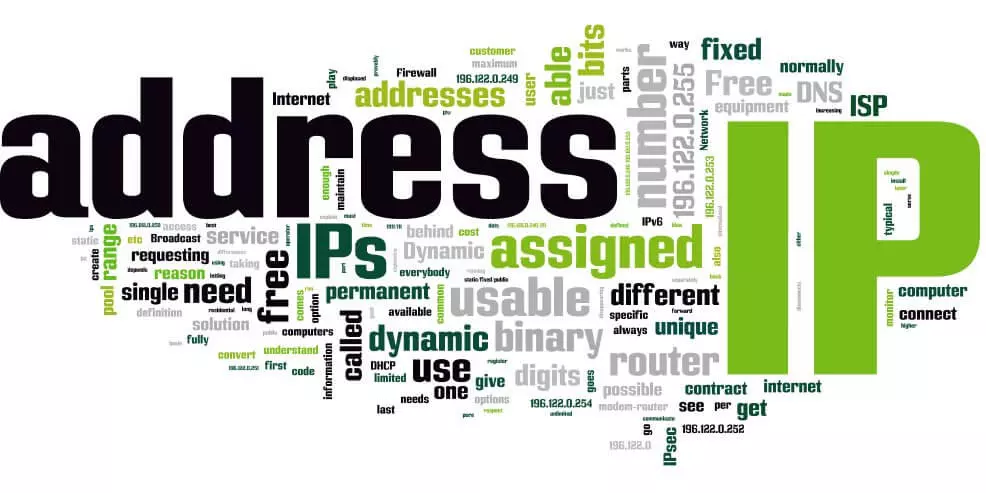Internet Protocol Address (or IP Address) is a unique address logical numeric address that is assigned to every single computer, printer, switch, router or any other device that is part of a TCP/IP-based network. Most IP addresses look like this: 151.101.65.121 Other IP addresses you might come across could look more like this: 2001:4860:4860::8844
What is an IP Address Used For?
An IP address provides an identity to a networked device. Similar to a home or business address supplying that specific physical location with an identifiable address, devices on a network are differentiated from one another through IP addresses. If I’m going to send a package to my friend in another country, I have to know the exact destination. It’s not enough to just put a package with his name on it through the mail and expect it to reach him. I must instead attach a specific address to it, which you could do by looking it up in a phone book.
This same general process is used when sending data over the Internet. However, instead of using a phone book to look up someone’s name to find their physical address, your computer uses DNS servers to look up a hostname to find its IP address.
The IP address identifies each sender or receiver of information that is sent in packets across the Internet. Most networks today, including all computers on the Internet, use the TCP/IP protocol as the standard for how to communicate on the network. The IP address is the core component on which the networking architecture is built; no network exists without it.
When you request an HTML page or send e-mail, the Internet Protocol part of TCP/IP includes your IP address in the message (actually, in each of the packets if more than one is required) and sends it to the IP address. The IP address space is managed globally by the Internet Assigned Numbers Authority (IANA).
Types of Internet Protocol (IP address)
- Dynamic IP addresses – are temporary and are assigned (via DHCP) each time a computer joins a network.DHCP assigns IP addresses using a pool of available addresses which are part of the whole addressing scheme. Though DHCP only provides addresses that are not static, many machines reserve static IP addresses that are assigned to that entity forever and cannot be used again. DHCP is the most frequently used technology for assigning addresses. It avoids the administrative burden of assigning specific static addresses to each device on a network. It also allows devices to share the limited address space on a network if only some of them are online at a particular time.
- Static IP – Network infrastructure devices such as servers, routers, and firewalls are typically assigned permanent “static” IP addresses. Static IP addresses are generally preferable for such uses as VOIP (Voice over Internet Protocol), online gaming, or any other purpose where users need to make it easy for other computers to locate and connect to them. Static IP addresses are considered somewhat less secure than dynamic IP addresses since they are easier to track for data mining purposes.
What are IPv4 and IPv6?
Internet Protocol version 4 (IPv4) defines an IP address as a 32-bit number. IPv4 addresses are constructed means it’s able to provide over 4 billion unique IP addresses, However, because of the growth of the Internet and the depletion of available IPv4 addresses. IPv4 addresses are usually represented in dot-decimal notation, consisting of four decimal numbers. IPv4 addresses are written and displayed in human-readable notations, such as 172.16.254.1
A new version of IP (IPv6), using 128 bits for the IP address, was developed in 1995, and standardized as RFC 2460 in 1998. IPv6 deployment has been ongoing since the mid-2000s. IPv6 addresses are written in hexadecimal. IP addresses are usually in 2001:db8:0:1234:0:567:8:1.
IPv6 has facilities that automatically change the routing prefix of entire networks, should the global connectivity or the routing policy change, without requiring internal redesign or manual renumbering.








